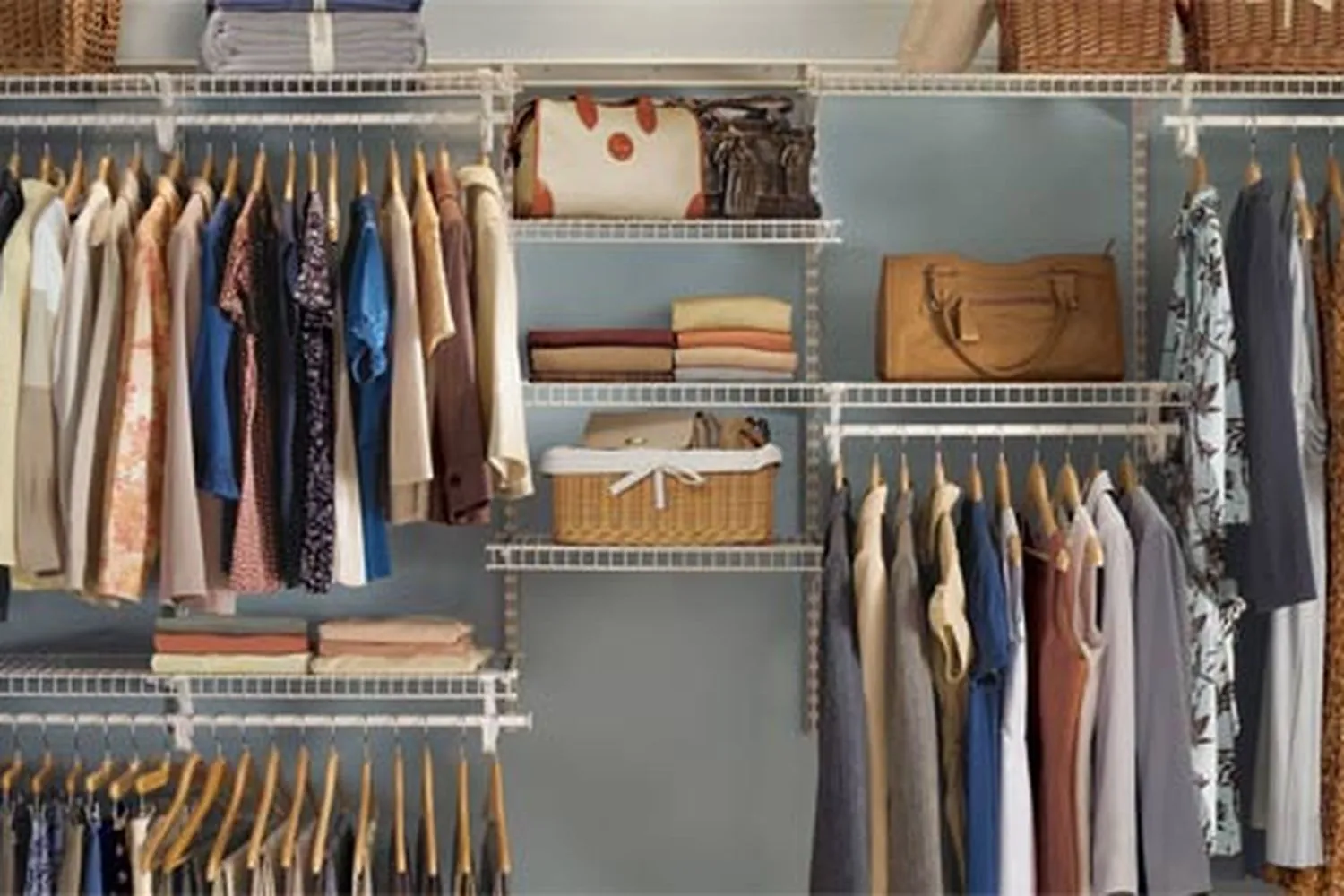With smart planning and organization, you can maximize your existing closet space and create a clutter-free environment. “With a little planning and sorting, you can stretch the storage space in a typical closet by as much as 60%,” says Pam Smith, director of product management for ClosetMaid. By implementing organization strategies, you can create a clutter-free space.
This article guides you through the process of transforming your cluttered closet into a well-organized storage space, focusing primarily on clothes closets that most of us use daily. We’ll explore many closet systems, sorting techniques, and customization options to help you make the most of your space.
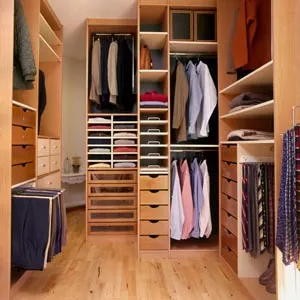
Closet Systems
A typical closet consists of wardrobe rods for hanging clothes, shelves for folded items, and storage accessories. There are two main categories of closet systems: plastic-coated wire and solid shelving.
Plastic-coated wire systems are more affordable and flexible. These systems also come with mesh sizes, allowing you to choose the best option for storing different items. Solid shelving systems are made of particleboard covered with laminate or solid wood. While more expensive, they have a more furniture-like appearance.
When buying a closet system, keep in mind that you’ll need to purchase some components separately. These include wall brackets, end brackets, support brackets, and tracks for solid shelves. Drawers and baskets may also require additional hardware like runners.
For renters, modular closet systems can be a good option. These systems have prefabricated units that can be assembled with few tools and easily disassembled when moving.
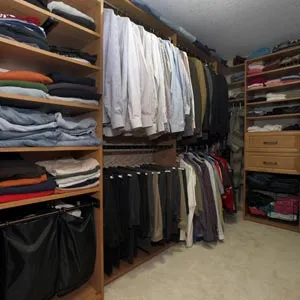
Sorting It All Out
Before installing a new closet system, assess everything you want to store in the space. Ask yourself how frequently you wear certain clothing items, which clothes are seasonal and can be stored elsewhere, and what accessories, like ties, belts, and shoes, are used the most.
Also, account for the condition and fit of clothing, donating items you no longer want. Once you have a clear idea of what you need to store, visit a home center or retail outlet to explore products and gather ideas for your closet plan. Many stores have sample plans or manufacturers’ brochures that can be a starting point for your design.
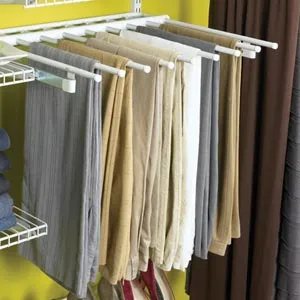
Customizing the Plan
While all closet systems are custom projects based on individual storage needs, there are common elements to consider when designing your closet space.
Hanging Items
For short-hanging items like shirts, blouses, and folded pants, install two levels of hanging rods. As a general rule, place the top rod 80 to 82 inches up from the floor and install the bottom rod about 40 inches up from the floor.
Adjust measurements according to your clothing needs. For example, you might keep suits on the top rod and pants and shirts on the bottom. In a shared closet, assign the top rod to the taller person’s clothes.
Long dresses and coats require 50 to 60 inches of hanging space, but you can still maximize this area by placing a shoe rack or low shelf under these clothing pieces. For children’s closets, install a single rod 36 to 40 inches off the floor so they can reach their clothes easily.
Installing adjustable rods for children’s closest as they grow can be practical for homeowners. This makes the closet system adaptable to their changing clothing sizes without needing a complete renovation.
Shelf Items
Shelves provide neat storage for folded items like sweaters, shorts, and casual shirts. When planning shelf space, use shelves 12 to 16 inches deep, installing them between waist and shoulder height.
Stack bulky items like sweaters two to four high, and stack thinner items like T-shirts three to five high. In shared closets, use labels or dividers to designate specific shelf space for each person. This avoids mix-ups and keeps everyone’s clothing organized in their own space.
Accessories
Add accessories such as belt organizers, corner shelves, drawers, shoe racks, and wire baskets to further customize your closet. Drawers are great for storing smaller items like socks and underwear, while wire baskets can store items you don’t mind having on display.
Belt organizers help smaller, frequently used accessories remain accessible without cluttering up other spaces. Corner shelves can be perfect for otherwise wasted space, providing additional room for storing bulky items or seasonal attire.
Remember to include extra shelf and hanging space in your plan to accommodate future purchases. To maintain an organized closet, remove items you no longer use and donate or discard anything you haven’t worn in a year.
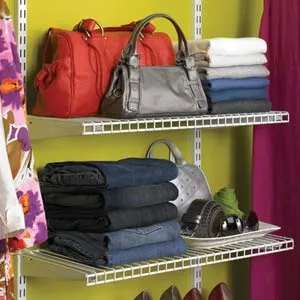
Putting It In
Closet systems are attached to either the wall or the floor. When installing your chosen system, follow the manufacturer’s instructions carefully, especially when securing shelves to drywall between studs. Remember to paint the closet walls and ceiling before installation if you’re doing a full renovation.
While closet design and installation can be a DIY project, professionals have a wider range of materials available, are more efficient, and have experience designing small spaces to maximize storage. Hiring a professional can be a great option if you need help organizing the space or want a high-end, furniture-like result.
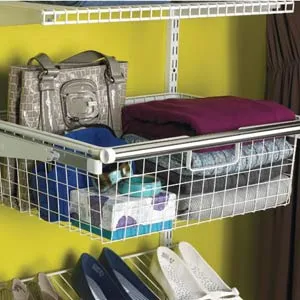
Measure for Measure
Exact measurements for clothing will vary, but there are some general guidelines to follow so you can design the right hanging spaces for clothing.
Men
- Dress shirts: 36 to 38 inches
- Slacks (folded over hanger): 28 to 30 inches
- Suits/sports jackets: 38 to 40 inches
Women
- Blouses: 30 to 32 inches
- Dresses: 45 to 50 inches
- Pants (folded over hanger): 28 to 30 inches
- Skirts: 38 to 40 inches
- Suits/blazers: 28 to 34 inches
Use these measurements as a starting point when planning your closet layout, but always measure your items for accurate results. These can also serve as a guide for adding shelves or drawers so you can still have enough space for hanging longer items.

Maximizing Vertical Space Within Your Closet
Use vertical space in your closet wisely. The back of the door can be a great spot for organizing shoes, belts, ties, and scarves. Install hooks or over-the-door organizers to keep these items today and accessible.
Use stackable storage containers for items you don’t frequently use. These can be placed on high shelves or the closet floor, depending on your space. Convertible furniture, such as ottomans with hidden storage or beds with built-in drawers, can create more storage without taking up extra room in your closet.
Seasonal Rotation of Your Clothes
To create even more space in your closet, implement a seasonal rotation system. Store off-season clothing in containers or vacuum-sealed bags, storing them in a separate space or area of the closet. This frees up space and helps protect unused clothing from dust.
Rotating seasonal items also allows you to reassess your wardrobe regularly. This can help you maintain a clutter-free closet by removing items that are no longer in style or needed in your closet.
